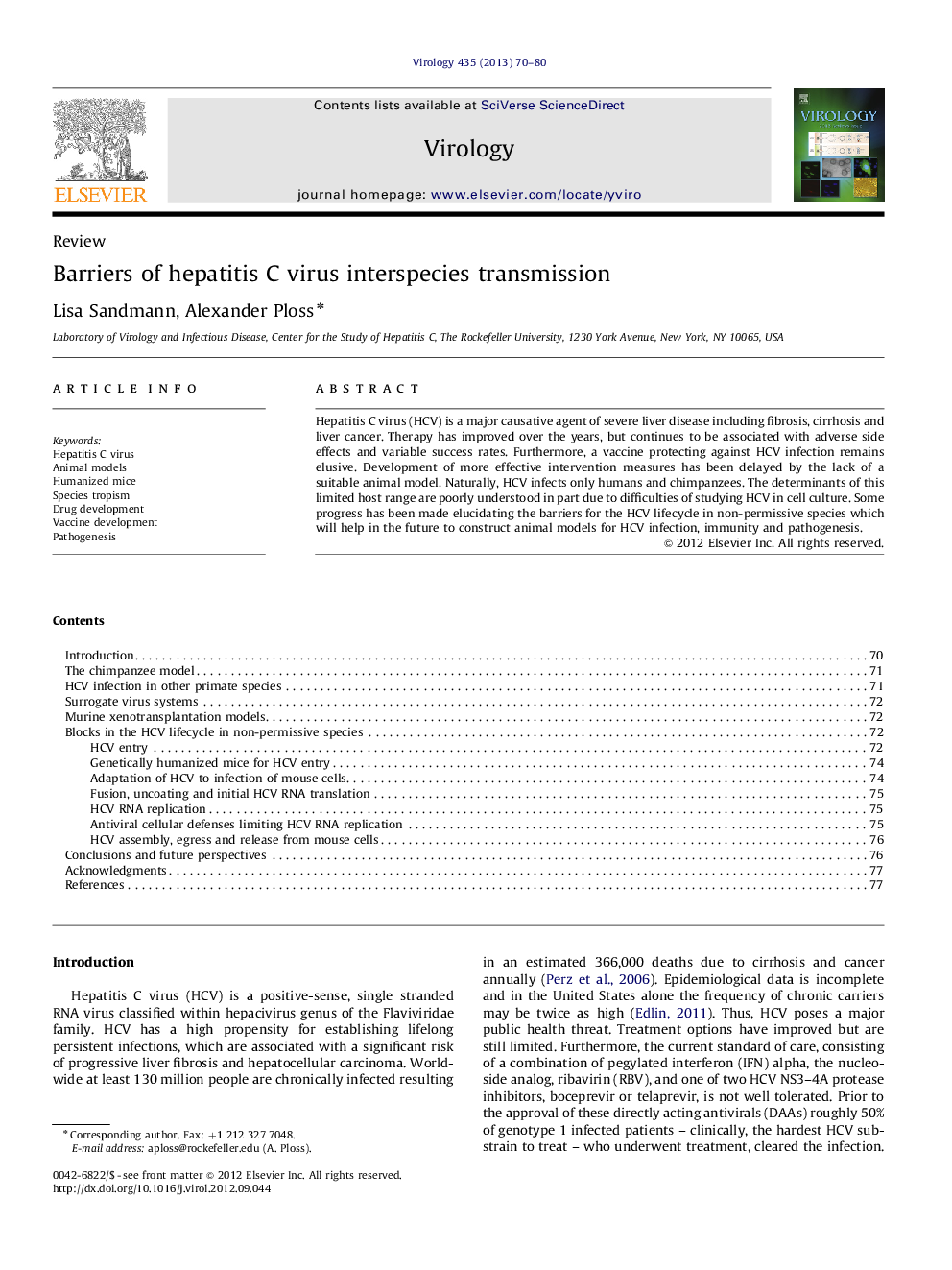| Article ID | Journal | Published Year | Pages | File Type |
|---|---|---|---|---|
| 3424244 | Virology | 2013 | 11 Pages |
Hepatitis C virus (HCV) is a major causative agent of severe liver disease including fibrosis, cirrhosis and liver cancer. Therapy has improved over the years, but continues to be associated with adverse side effects and variable success rates. Furthermore, a vaccine protecting against HCV infection remains elusive. Development of more effective intervention measures has been delayed by the lack of a suitable animal model. Naturally, HCV infects only humans and chimpanzees. The determinants of this limited host range are poorly understood in part due to difficulties of studying HCV in cell culture. Some progress has been made elucidating the barriers for the HCV lifecycle in non-permissive species which will help in the future to construct animal models for HCV infection, immunity and pathogenesis.
► Hepatitis C virus has a narrow host range limited to chimpanzees and humans. ► Constraints on chimpanzees research created a great need for alternative HCV models. ► HCV species tropism is restricted at multiple steps of the viral lifecycle. ► Species barriers can be overcome by viral and/or host adaptation.
